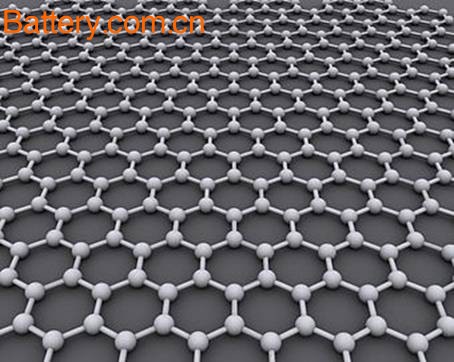Is graphene battery technology a gimmick or a black technology?
Graphene is considered a revolutionary energy storage material due to its strong electrical conductivity. In recent years, with the development of new energy vehicles and mobile communication equipment, the use of graphene to improve, improve the performance of power and energy storage battery materials is becoming the focus of attention in the industry.

In the field of new energy vehicles, the concept of “graphene battery†has been repeatedly mentioned, and it seems to have become a breakthrough in the current battery technology of electric vehicles . The graphene technology battery is known as the “milestone black technologyâ€, which claims to extend the cruising range, battery life, and shorten the charging time.
However, along with the pursuit, the controversy has never stopped. The "graphene battery" at the cusp of the wind is the concept of speculation, or it will really usher in the market opportunity, still need to be seen.
"Graphene battery" does not exist
Graphene materials are mixed with traditional battery materials, which can significantly improve battery charge and discharge, cycle life, etc. It has also become a winning point for power battery companies in the new round of market competition.
It is undeniable that the innovation and research and development of graphene application technology has always been a difficult problem to restrict the industrial upgrading of China's battery-related industries.
If graphene can effectively improve the power battery capacity and achieve fast charging, it will directly hit the pain point of large-scale promotion of power batteries, and it is of great significance to the industrial upgrading of lead-acid battery industry. From this perspective, the power battery will be an opportunity for the scale application of graphene.
After conducting research and investigation on the national graphene industry, we found that adding graphene as a basic material to existing battery materials has become a common practice among mainstream battery companies in China.
The application form of graphene in the field of batteries is nothing more than three kinds: one is directly used as a positive/negative material; the other is used as a conductive additive, added to the positive/negative electrode material, or the composite material is modified to improve the electrode material. Electrode conductivity and charge and discharge rate; third, as a current collector or current collector coating, used to improve battery power characteristics.
At present, the application of graphene on lithium ion batteries mainly adopts the latter two methods.
Because graphene is directly used as a negative electrode material, its surface characteristics are easily affected by the outside world, the stability is extremely poor, and there are problems such as low efficiency for the first time, and it is difficult to meet the performance requirements of lithium ion batteries.
As an important part of the emerging energy industry strategy of lithium-ion batteries, lithium-ion batteries are a hot spot for investors to pay attention to, and some groups are inevitably involved in speculation. But to be precise, there is currently no such thing as a "graphene battery."
Previously, Dongxu Optoelectronics produced the "Alkenwang" battery, but it did not define any of its battery products as "graphene batteries."
Previously, the graphene lithium battery produced by Huawei was once hot. However, in the public information, graphene is only used as a heat-dissipating material for Huawei's battery, which is used to improve the heat dissipation performance of lithium-ion batteries, and does not directly use the graphene material to make the battery body.
Graphene does improve battery performance, but it is mainly used as an auxiliary material (additive) in battery materials. As the most innovative new material in the 21st century, graphene has a good application potential in the field of automotive batteries.
"Gravity Die Casting. A permanent mould casting process, where the molten metal is poured from a vessle of ladle into the mould, and cavity fills with no force other than gravity, in a similar manner to the production of sand castings, although filling cn be controlled by tilting the die."
Gravity Die Casting
Sometimes referred to as Permanent Mould, GDC is a repeatable casting process used for non-ferrous alloy parts, typically aluminium, Zinc and Copper Base alloys.
The process differs from HPDC in that Gravity- rather than high pressure- is used to fill the mould with the liquid alloy.
GDC is suited to medium to high volumes products and typically parts are of a heavier sections than HPDC, but thinner sections than sand casting.
There are three key stages in the process.
- The heated mould [Die or Tool] is coated with a die release agent. The release agent spray also has a secondary function in that it aids cooling of the mould face after the previous part has been removed from the die.
- Molten metal is poured into channels in the tool to allow the material to fill all the extremities of the mould cavity. The metal is either hand poured using steel ladles or dosed using mechanical methods. Typically, there is a mould [down sprue" that allows the alloy to enter the mould cavity from the lower part of the die, reducing the formation of turbulence and subsequent porosity and inclusions in the finished part.
- Once the part has cooled sufficiently, the die is opened, either manually or utilising mechanical methods.
Advantages
- Good dimensional accuracy
- Smoother cast surface finish than sand casting
- Improved mechanical properties compared to sand casting
- Thinner walls can be cast compared to sand casting
- Reverse draft internal pockets and forms can be cast in using preformed sand core inserts
- Steel pins and inserts can be cast in to the part
- Faster production times compared to other processes.
- Once the tolling is proven, the product quality is very repeatable.
- Outsourced Tooling setup costs can be lower than sand casting.
Gravity Casting Parts,Aluminum Alloy Gravity Casting Parts,Aluminum Gravity Die Casting Parts,Gravity Casting Aluminum Parts
HSI INDUSTRIEL LTD , https://www.hsiindustriel.com